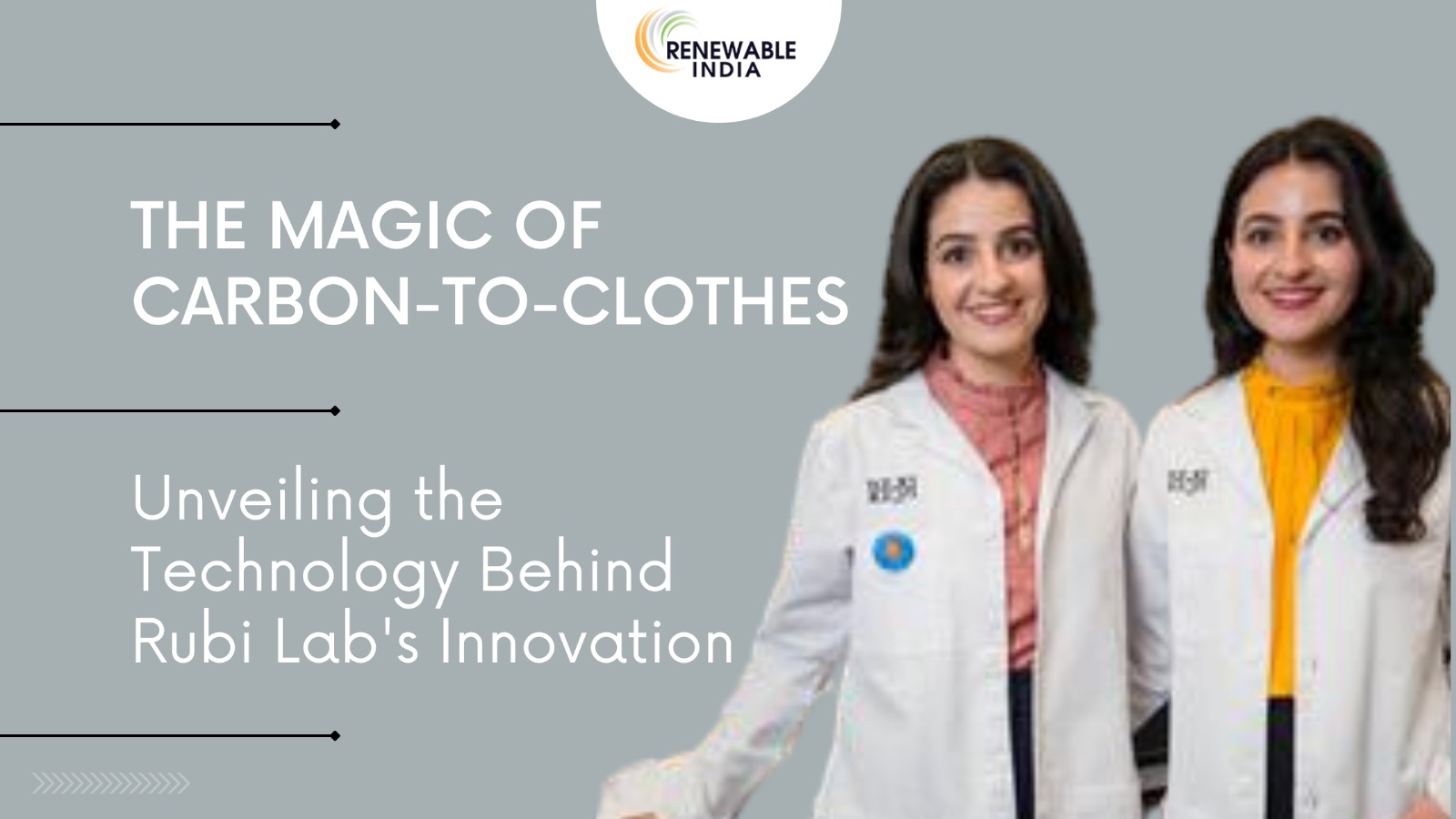
In a world grappling with the detrimental effects of fast fashion on the environment, two passionate entrepreneurs, Neeka Mashouf and Leila Mashouf, stepped up to address the pressing issue of greenhouse gas emissions in the fashion industry.
They established Rubi Lab, a California-based startup with the goal of converting carbon dioxide from the atmosphere into sustainable clothing, driven by their passion for the environment and armed with ground-breaking patented technology. In this blog, we examine their remarkable journey and the possible benefits of their ground-breaking finding.
The Green Fashion Pioneers: Neeka and Leila were inspired to take action after learning about a BBC study that revealed the fashion industry’s astonishing contribution to greenhouse gas emissions (above 10%). They set out on a mission to develop a solution that might close the gap between fashion and environmental responsibility after realising the need for sustainable alternatives.
Capturing carbon dioxide from the air is the first stage. This is accomplished by a method known as carbon capture and utilisation (CCU). CCU technologies employ a number of techniques, such as chemical absorption, physical adsorption, and membrane separation, to remove carbon dioxide from the air.
The carbon dioxide is subsequently transformed into cellulose after being captured. Enzymatic hydrolysis is the procedure used to do this. Enzymes are used in enzyme-mediated hydrolysis to disassemble carbon dioxide into its component molecules, which are subsequently put back together to form cellulose.
Following the spinning of the cellulose into fibres, a variety of textiles, such as cotton, linen, and rayon, can be created.
Environmental Impact: Rubi Lab significantly lowers the carbon impact of their clothing by using CO2 from the atmosphere to make materials. This innovative solution lessens the damaging impacts of the fashion industry on the environment and aids in the fight against climate change.
Conservation of Resources: The traditional textile industry mainly depends on limited resources like water and fossil fuels. The innovative strategy used by Rubi Lab reduces the requirement for processes that consume a lot of resources and makes room for more environmentally friendly ones.
Circular Economy: A circular economy perspective on clothing is made possible by the conversion of CO2 into cellulose. Clothes that are created out of nothing can be recycled and transformed into new ones, minimising waste and fostering a closed-loop system.
Empowering Sustainable Fashion: Rubi Lab’s invention satisfies the expanding need for clothes that are made ethically and with minimal environmental impact. The startup’s sustainable services target an expanding market sector as consumers become more conscientious of their purchase decisions.
Neeka and Leila are pioneers in the field of sustainable fashion, and their cutting-edge technology can encourage other clothing companies to adopt environmentally friendly procedures. Fighting climate change will require a concerted effort to move towards environmentally friendly fashion.
The creative sisters, Neeka and Leila Mashouf, have used their passion for the natural world as a potent force for change. Their innovative technology, which transforms CO2 from the air into cellulose and ultimately into fashionable clothing, represents a victory in the fight against climate change.
Because of Rubi Lab’s commitment to sustainability, fashion lovers may now enjoy gorgeous clothing while helping to protect the environment. The future of fashion seems brighter and more responsible than ever as we embrace this incredible discovery. It’s time to appreciate fashion that merges sustainability and style—clothes that appear out of nowhere.
Mufin Green and SIDBI Join Forces to Empower Sustainable Mobility with Enhanced EV Financing Support
Leave a Reply